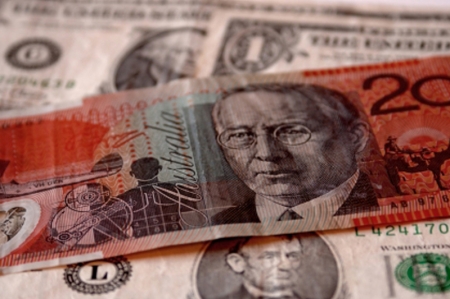Forex
Dollar continues to fall; euro near multi-month high

Investing.com – The U.S. dollar weakened Wednesday, adding to the previous session’s losses, with the euro benefiting despite signs of economic weakness in the eurozone.
At 04:00 ET (09:00 GMT), the Dollar Index, which tracks the greenback against a basket of six other currencies, traded 0.1% lower to 100.080, after falling more than 0.5% in the previous session, its largest one-day percentage fall in a month.
Dollar continues to fall
The U.S. dollar has struggled for friends after the started its rate-cutting cycle with a hefty 50 basis-point reduction earlier this month.
Data on Tuesday showed U.S. unexpectedly fell in September, raising concerns about further growth in the largest economy in the world, especially as the labor market shows signs of contracting.
“In a surprise move yesterday, US consumer confidence was much weaker than expected,” said analysts at ING, in a note. “The market is very sensitive to this theme since the US consumer has been so resilient for so long.”
Markets are now pricing in a 59.5% chance of a 50-basis-point rate cut at the Fed’s next policy meeting, up from just 37% a week ago, according to the CME FedWatch tool.
Euro close to 13-month high
In Europe, traded 0.1% higher to 1.1188, hovering near a 13-month high hit last month with the euro benefiting from the dollar weakness despite data pointing to economic weakness in the eurozone.
“There is very little on the European calendar today, so EUR/USD range trading looks likely. But the fact that EUR/USD is holding above 1.1100 is encouraging for modest EUR/USD bulls like ourselves,” added ING.
traded 0.1% lower to 1.3394, falling back from levels not seen since March 2022.
Sterling has received support as the Bank of England is widely seen as unlikely to be as aggressive with its rate cuts this year when compared to the Federal Reserve.
Bank of England’s Megan Greene is set to speak later in the session, and her comments will be studied for further clues over the timing of monetary easing from the UK’s central bank.
rose 0.1% to 10.1041, ahead of the latest policy-setting meeting by Sweden’s .
The central bank is widely expected to cut rates by 25 basis points later in the day, but Riksbank Governor Erik Thedeen hasn’t taken the possibility of a half-point cut off the table.
Yuan close to record levels
traded 0.1% lower to 7.0238, falling close to its lowest level since May 2023 after Beijing announced a slew of stimulus measures on Tuesday, including a cut to banks’ reserve requirements, as well as lower mortgage rates.
rose 0.4% to 143.81, while fell 0.2% to 0.6878, just below a 19-month high after rallying sharply in the prior session.
data released on Wednesday showed inflation fell to a three-year low in August, while declines in core inflation were less pronounced.
The held interest rates steady on Tuesday, and said that while inflation was expected to fall in the near-term, it only expected price pressures to sustainably reach its target range by 2026.

 Forex3 years ago
Forex3 years agoForex Today: the dollar is gaining strength amid gloomy sentiment at the start of the Fed’s week

 Forex3 years ago
Forex3 years agoUnbiased review of Pocket Option broker

 Forex3 years ago
Forex3 years agoDollar to pound sterling exchange rate today: Pound plummeted to its lowest since 1985

 Forex3 years ago
Forex3 years agoHow is the Australian dollar doing today?

 Cryptocurrency3 years ago
Cryptocurrency3 years agoWhat happened in the crypto market – current events today

 World3 years ago
World3 years agoWhy are modern video games an art form?

 Commodities3 years ago
Commodities3 years agoCopper continues to fall in price on expectations of lower demand in China

 Economy3 years ago
Economy3 years agoCrude oil tankers double in price due to EU anti-Russian sanctions




























